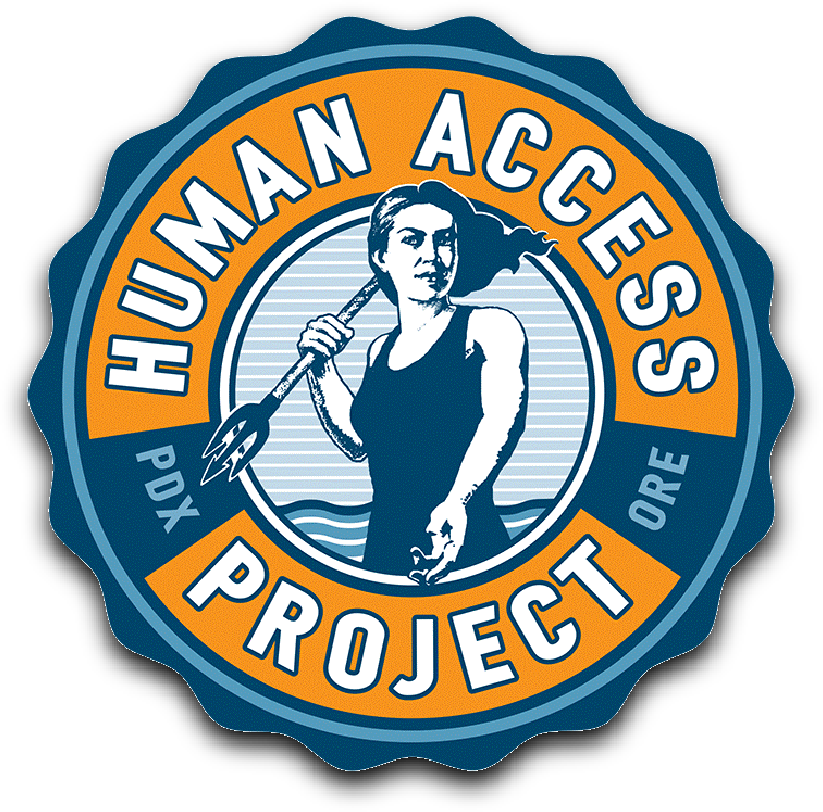
WILLAMETTE RIVER ADVOCACY
Birth of a Beach, Audrey McCall Beach {Part 2 of 3}
By Ringleader Willie Levenson
In the first part of this story about the forming of Audrey McCall Beach, HAP worked with inmates from the Inverness Inmate Work Crew to haul out concrete from the beach. With their help and the muscle power of other friends/volunteers, we removed 19 tons of concrete over four summers – all without bringing in heavy mechanized equipment (as required in our permit).
The more concrete we got rid of, the more I felt the need to ramp up removal operations. We had to get permission from eight separate agencies to remove the concrete chunks. At the time it felt very unpredictable how long this fragile consensus would last. All these relationships were new, and HAP was an unknown quantity.
The beach year after year started to look different. I didn’t like the potential attention, and wanted this project to be as under the radar as possible. I was concerned our progress would make one of the parties edgy and they would jump ship, and we would have to stop our work.
So to get it done faster, we ramped up operations. The Inmate Work Crew had an ATV with a bed on the back. The process was we’d drive the ATV down the steep bank from the Esplanade, load up the 4’x4’ ATV bed, with just the right amount of concrete chunks and weight distribution so it would make it up the bank (we learned the hard way you could overload the ATV), then unload the concrete into an empty dumpster. Problem was, time was wasted waiting for the ATV to complete its trip. So we rented a second ATV to be more efficient. There was always an ATV going up and one coming down!
As we were removing concrete chunks we uncovered a 150-foot steel cable that led into the river. Try as we might, even using the ATV, we couldn’t pull it out. The ends were frayed like a thick rope made out of steel. With a rusty steel cable it’s like 1,000 little rusty pin pricks. We knew the cable had to be removed, it was completely unsafe. I imagined it must have been tied to a deep sunken pier you couldn’t see.
We had no money and no idea how to get rid of the cable. I did a bit of research and wound up on the phone with Marvin from Fred Devine Diving and Salvage. Fred Devine has been doing work on the Willamette River since 1913 out of Swan Island. I told Marvin about our predicament, the work we had done, and what we were trying to do. He said he had a team of guys in Sellwood and they would swing by to see if they could do anything with the cable, pro-bono.
A team of three came out, two divers and a pilot. Amazingly, they found the thick cable was not connected to anything they could see – it just seemed to go down into the deep sediment of the river. So we tried to wench it out. They tugged and pulled and cajoled for two hours. No go. The cable would not budge. They said they were sorry, that was all they could do. I literally asked them to try one last time. They agreed, bared down, and the cable budged. Just a bit. Then it moved more, and then it was all removed, a golden moment I will never forget.
It turned out the cable was not connected to anything. It was just deeply buried in the river. The lesson? Ask the right people for the right things in the right way. Day in day out these folks do utilitarian work keeping boats moving and getting them out of trouble. That day on the riverbank, the Fred Devine crew used their expertise to be heros.
At one point, we removed so much concrete the ATV couldn’t reach the southern sections of the beach where more concrete remained. So we linked up with businesses like Columbia Sportswear to bring out employees to form human conveyor belts and move concrete hand over hand out to where the ATV could reach it. Travel Oregon came out several times to pick up rip-rap rock from the river’s edge, moving it back up the bank where it provides bank protection. This also made the beach beachier by getting the big ugly rocks off the shore.
Finally, we pulled a permit with Oregon Department of Environmental Quality to remove 30 pilings at the beach. Pilings don’t belong in a human swimming area and they degrade shallow water habitat for salmon. We fundraised to remove the pilings and Fred Devine came back and did the work for a song.
We couldn’t have done all this without the help of Fred Devine, the Inverness Inmate Work Crew, the employees of Columbia Sportswear and Travel Oregon, committed City staff, and many good friends and volunteers.
Outside of my mom being a science teacher and author, I have had no formal environmental education. I am not a biologist, scientist, or engineer. In college I studied accounting, not activism. I’m just a dude who loves rivers and wants our community to embrace the Willamette and perhaps fall in love with it as I have.
Stay tuned for Part 3 in the birth of Audrey McCall Beach – when things get political!
< Return to WILLAMETTE RIVER ADVOCACY Main Page






